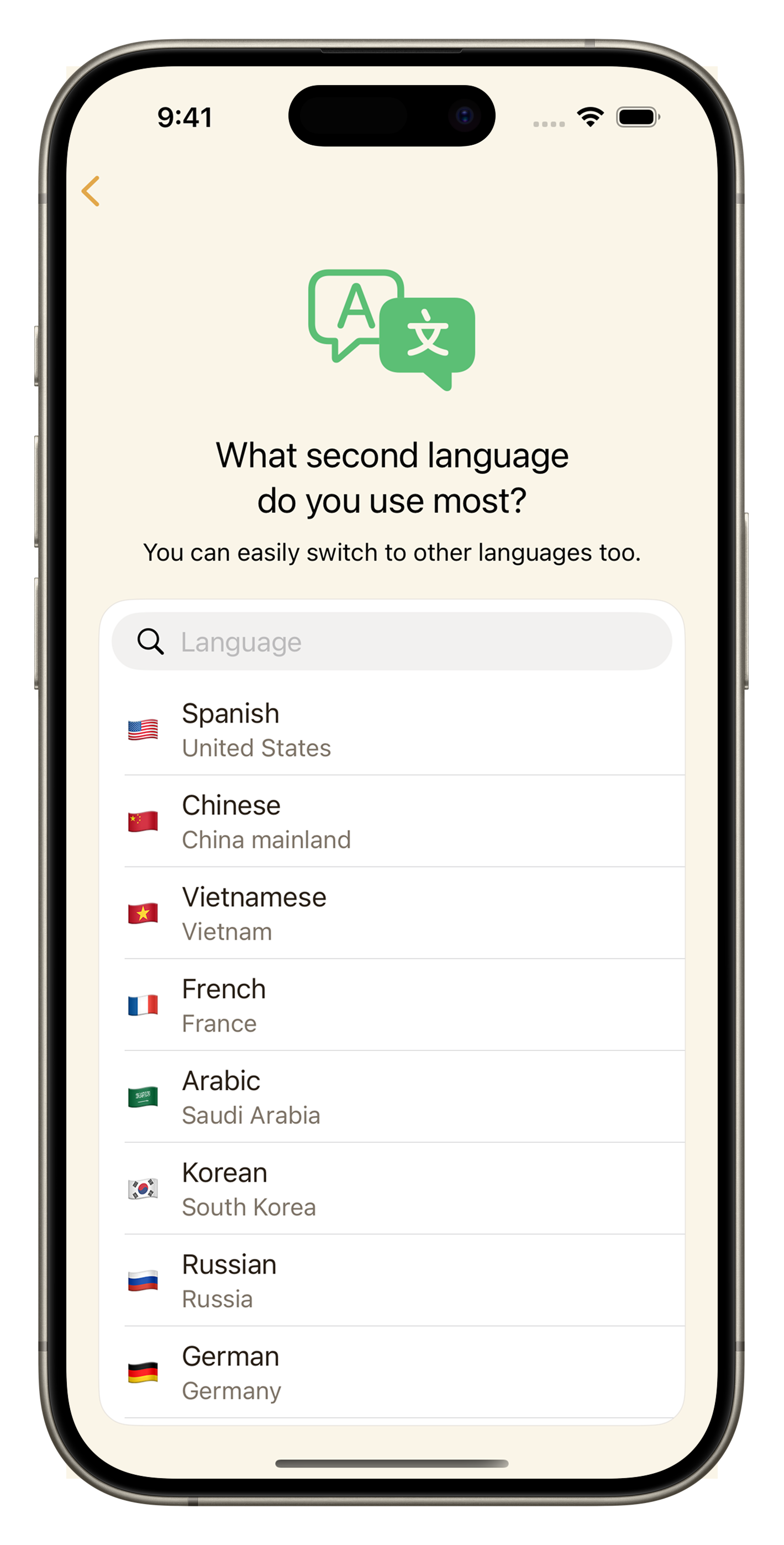Learn what every word
really means
Most translation apps stop at surface-level matches.
For example, they might translate "eventually" as eventualmente, but in Spanish, eventualmente means “possibly”, not “in the end.”
LinguaSense shows you the real meaning behind each word. It gives you multiple natural options, like finalmente and al final, each with clear examples, tone, and usage. You’ll see how native speakers actually use them, and when each one fits.
See tone and nuance
in every word
Languages often express the same idea in very different ways, not only in words, but in formality, tone, and cultural nuance. LinguaSense highlights these subtle
differences so your translations aren't only correct, but sound the way a native speaker would actually say them.
Whether something sounds neutral, casual, polite, formal, or even sarcastic depends on context. LinguaSense labels the tone of each translation clearly and shows you
examples so you can learn when and how to use it naturally.
Translate real expressions
Literal translation often falls apart when you’re dealing with real, everyday language. Expressions like "I'm on it" or "Take your time" don’t translate word for word, and when they do, the meaning is usually lost.
LinguaSense recognizes these kinds of phrases and gives you natural equivalents that make sense to native speakers. You’ll learn what they really mean, how to say them in your target language, and how they’re actually used.
Idioms, translated like idioms
Idioms don’t make sense when translated literally. Phrases like "Break a leg" or "Out of the blue" can sound confusing or even meaningless in another language if you try to translate the words directly.
LinguaSense recognizes these expressions and finds equivalent idioms in the target language — like ¡Mucha suerte! for "Break a leg" or De repente for "Out of the blue." You’ll see natural phrasing, not robotic word swaps, and learn how to express the same idea the way native speakers actually do.
Context-rich examples
Understanding a translation is one thing. Knowing how to use it in a sentence is another. LinguaSense shows you real examples that demonstrate how each translation works in context.
You’ll see how native speakers actually use each word or phrase, including tone, structure, and typical surroundings. It’s not just about knowing what something means — it’s about knowing how to say it naturally in real conversation.
Hear natural pronunciation
Many apps can pronounce a word, but not all of them sound natural. LinguaSense uses high-quality neural voices so you can hear how a native speaker would actually say each word or phrase.
You’ll hear smooth, fluent speech that reflects real pronunciation, not something that sounds flat or computer-generated.
Learn from your mistakes
If you misspell a word, LinguaSense helps you learn. Other apps fix spelling silently or keep the errors, so you never know about your mistakes.
LinguaSense shows exactly what was corrected, side by side with what you typed, and makes it easy to spot the difference at a glance.
Grammatical mistakes get corrected as well
LinguaSense also fixes grammatical errors. They are often subtle, and without a correction like this, you’d never know that you made a mistake.
If your phrasing is off, learn the correct idiom
LinguaSense recognizes when you try to use an idiom but get the wording wrong and shows you the correct way.
It also highlights how your phrasing was different, so you can see exactly what went wrong and learn from your mistake.
Idiom errors stand out the most, so it’s especially important to get them right.
Supports 30 languages
LinguaSense focuses on high-quality support for the world’s most spoken languages, including English, Spanish, Chinese, Arabic, French, Russian, Korean, German, Portuguese, and Vietnamese.











